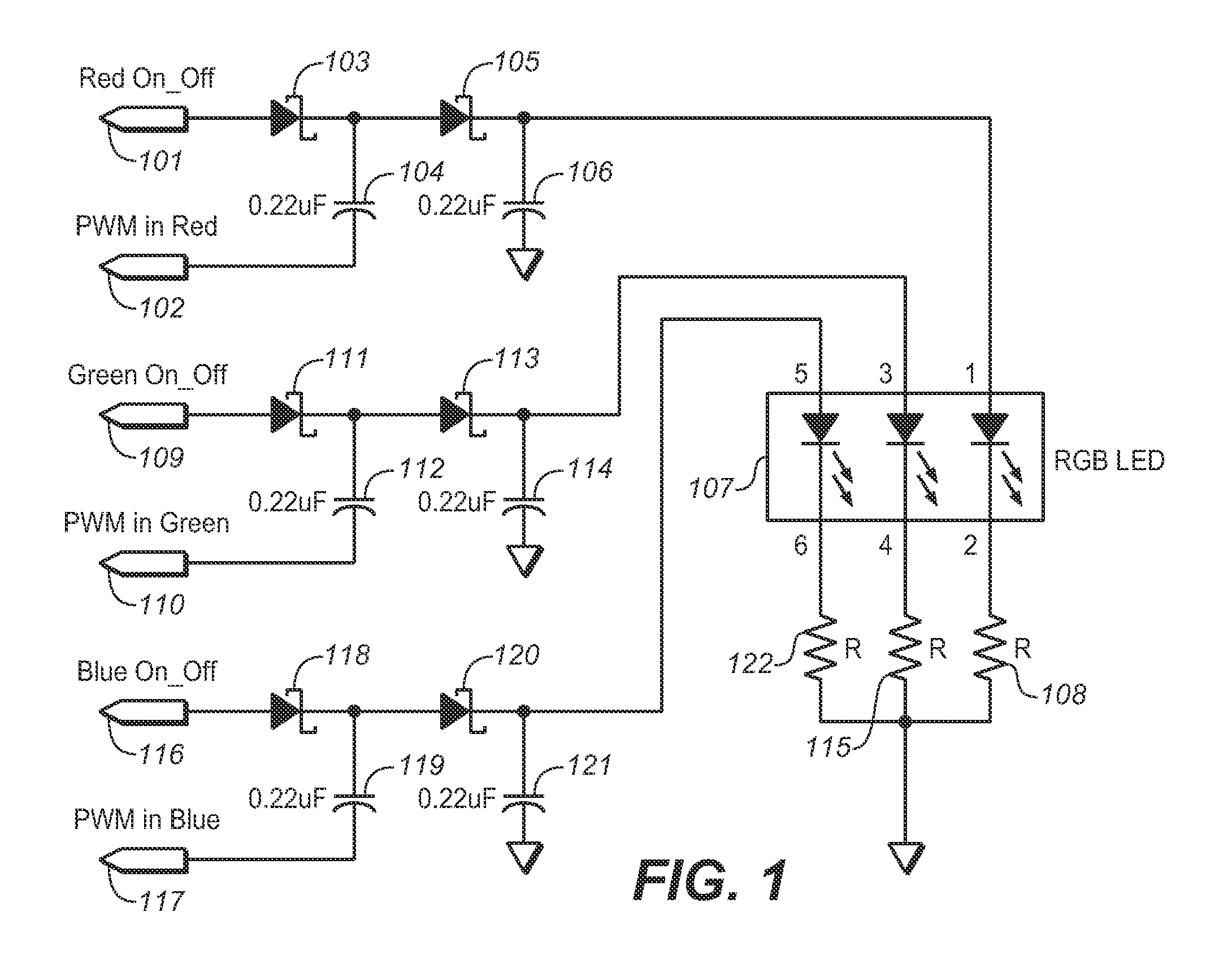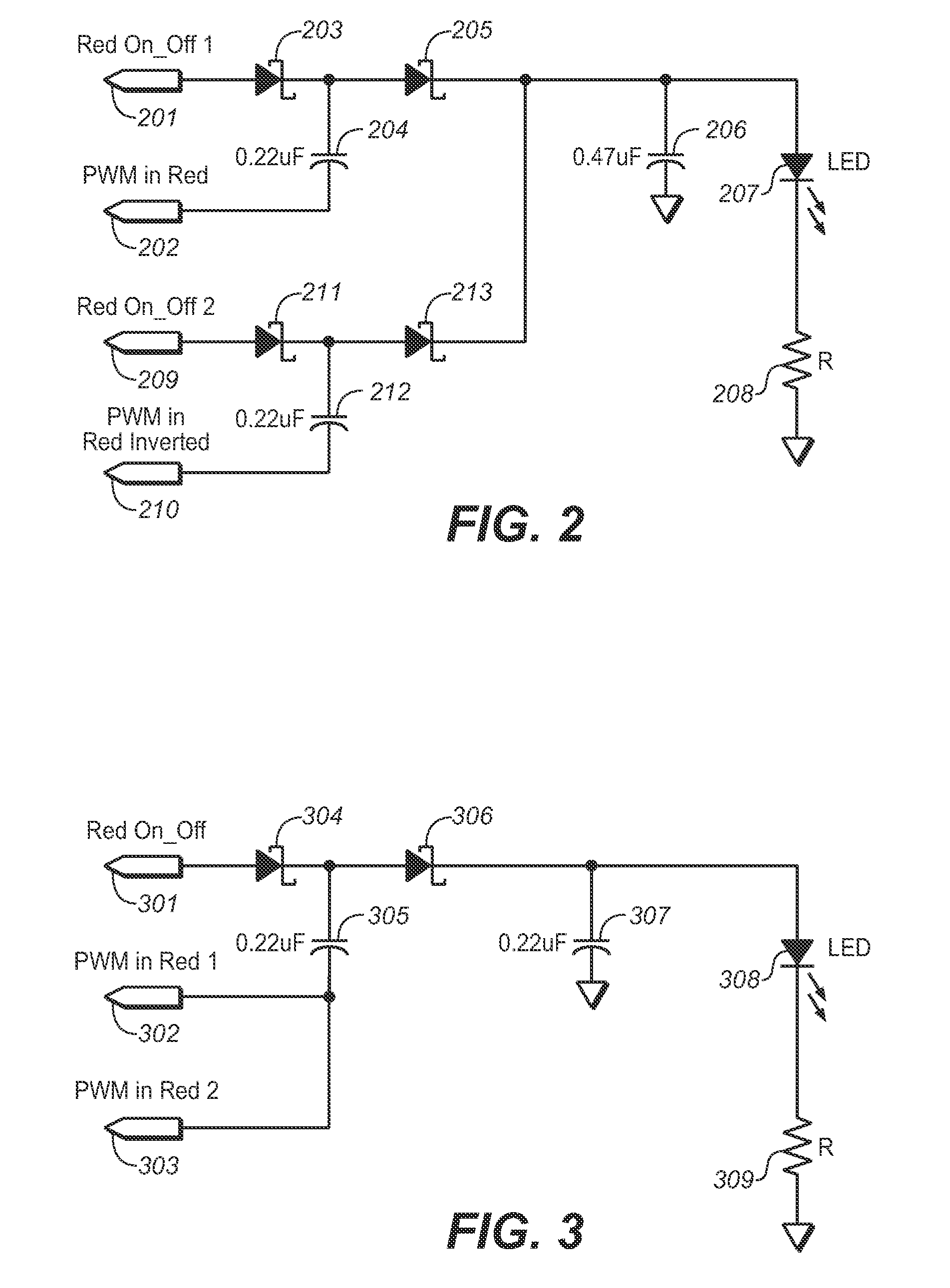Circuit and method for controlling RGB LED color balance using a variable boosted supply voltage
- Summary
- Abstract
- Description
- Claims
- Application Information
AI Technical Summary
Benefits of technology
Problems solved by technology
Method used
Image
Examples
Embodiment Construction
[0031]Referring first to FIG. 1, this schematic diagram shows how the interface of a microprocessor may be used to drive the RGB LED array using three separate charge pumps. The microprocessor drives pins 101 and 102 in order to achieve the boosted voltage across capacitor 106.
[0032]In operation, if the red LED is to be in the OFF mode, the MCU can drive pin 101 low while shutting off the PWM drive to pin 102. When the LED is desired to be in the ON mode, the MCU can drive pin 101 high and hence supply the current necessary to charge flying capacitor 104 when pin 102 is driven low.
[0033]Thereafter, the MCU will raise the PWM pin from low to high on one cycle of pulsing on pin 102. The high voltage at the low side of charged flying capacitor 104 boosts its output to nearly twice the voltage of the MCU supply.
[0034]Output capacitor 106 begins completely discharged. With the output of flying capacitor 104 at nearly twice the supply voltage, the charge will transfer from flying capacito...
PUM
 Login to View More
Login to View More Abstract
Description
Claims
Application Information
 Login to View More
Login to View More - R&D
- Intellectual Property
- Life Sciences
- Materials
- Tech Scout
- Unparalleled Data Quality
- Higher Quality Content
- 60% Fewer Hallucinations
Browse by: Latest US Patents, China's latest patents, Technical Efficacy Thesaurus, Application Domain, Technology Topic, Popular Technical Reports.
© 2025 PatSnap. All rights reserved.Legal|Privacy policy|Modern Slavery Act Transparency Statement|Sitemap|About US| Contact US: help@patsnap.com



